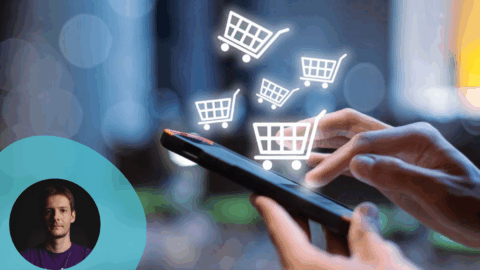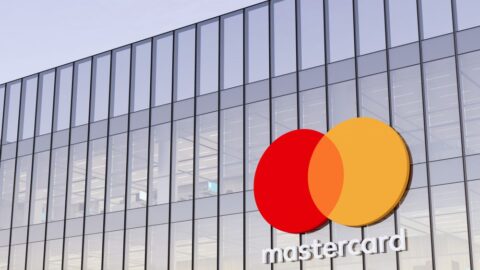As competition in the retail industry continues to soar, retailers are diving into savvy consumers’ five senses to persuade purchasing decisions.
In a recent IBM-sponsored webinar, titled: “The Future Of Retailing In A Multi-Sensory, Multi-Channel World,” Martin Lindstrom, Marketing Consultant and author of Brandwashed: Tricks Companies Use to Manipulate Our Minds and Persuade Us to Buy, shared tips for retailers in search of new ways to connect with consumers personally based on previous purchase decisions.
With the majority (85%) of decisions taking place in the brain’s non-conscious segments and only 15% occurring in the conscious, most consumers buy irrationally, said Lindstrom. To better influence consumer purchases, retailers must configure stores to appeal to these non-conscious decision-drivers.
“Most of the decisions we make when we’re out shopping are influenced by the ability to imagine and observe great stories,” noted Lindstrom. “These stories change our perceptions about our tastes, smell, tactile sensations – all of which are influenced by storytelling.”
The “Smash” Effect Persuades Consumers’ Purchases
For example, Lindstrom stated, Coca-Cola collaborated in 1915 with an external bottle factory manufacturer to create the soft drink’s curvy trade-marked glass bottle, purposely made to represent the Coca-Cola Company in parts as well as the whole. “The agreement was to develop a bottle so smart that if you were to drop it on the floor and it smashed into thousands of pieces, you’d still be able to pick up one piece of glass and recognize the brand,” explained Lindstrom, who calls this approach the philosophy of “Smash Your Brand.”
During his presentation, Lindstrom showed a commercial for an overseas McDonald’s in which a model wears the signature “Ronald McDonald” colors and holds a Big Mac sandwich. This “smashable” television commercial ― defined by Lindstrom as one that uses powerful symbols to help consumers immediately recognize the brand and causes them to crave the product ― utilized several of McDonald’s smashable components. These elements include the red and white stripes, the Big Mac sandwich and red hair. Without initially seeing the famous yellow arches, viewers still were able to identify the fast food chain.
Another example of a brand’s “smashable” components are Apple products, which include the advertising silhouette, functionality sound, naming, navigation, the wheel on the iPod and its white earplugs.

“It’s fascinating that the most powerful brands in the world own the most ‘smashable’ components, and that should be the rule for retailers,” said Lindstrom. “Retailers should own as many symbols, or ‘smashables,’ as possible because the more you own, the more consumers don’t feel they are just going into any retailer.”

Consumers should be able to tell the difference between one retailer and its competitors, he noted. Lindstrom suggests using the “Smash Your Brand” wheel to leverage a personalized approach to branding methods.
Understanding Why We Purchase
In a recent sensory study conducted during a Coca-Cola television commercial, scientists noticed when the sensory part of the brain lit up. This reaction indicated consumers’ involvement with the commercial and initial product craving.
Lindstrom noted three powerful senses revealed by the study:
- Sound + Visions = Activates The Reward Senders In Our Brain
- If sound (“eat 29% more”) is slower than heartbeat rate, and the music is played slowly, the more time and money spent at the location.
- Sound + Vision = Attention + Memory
- Activating previous memories in consumers’ minds creates a comfortable feeling that causes consumers to spend more.
- Sound + Visions = Emotional Engagement = ConsumerPreference
- Retailers create consumer preference based on sound.
In an experiment at a wine store with two types of wine, French and German, the retailer used corresponding French and German music to boost the sales of each wine. When the retailer played French music, there was a 77% increase in French wine purchases. By switching to German music, the retailer indicated a 69% sales increase in German wine purchases.
Eighty-three percent of all communications only appeals to one sense, leaving the remaining four available, reported Lindstrom. “Retailers who appeal to three of consumers’ senses double their marketing efforts.”
Regardless of gender, most consumers (80% of men and 90% of women)
have a “Proustian experience,” said Lindstrom, which takes them back in time based on the smell of a brand. He refers to Marcel Proust, an early 20th century novelist who immortalized the relationship between sensory stimulation and recollections of past experiences. Today, some of the most powerful brands in the world are working on nostalgia marketing.
In the future, retailers will continue to change their marketing efforts based on several sensory approaches, including:
- Senses will play an important role in branding strategies;
- Storytelling will become more prominent;
- Retailers will understand how to create non-conscious clues;
- Retailers will need to use sensory to understand how consumers influence each other; and
- More retailers will focus on becoming more authentic and honest.
“Brick-and-mortar retailers have more opportunities for non-conscious marketing due to their physical and sensory environments,” said Lindstrom. “Because they really can’t compete with online retailers based on price or volume, physical store retailers can compete on the sensory aspect. Remember, business is not 100% digital; There’s a reason why people meet face-to-face for business deals ― they evaluate each other best through physical interaction.”












